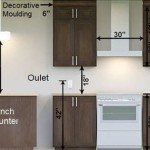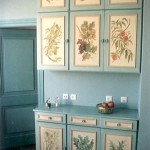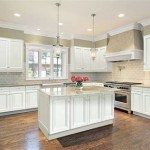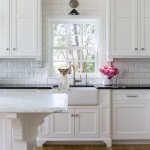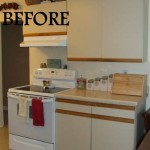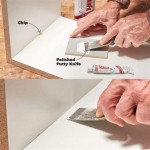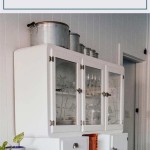What Is The Hardest Wood For Kitchen Cabinets?
Selecting the appropriate wood for kitchen cabinets represents a significant decision during kitchen renovation or construction. Durability, aesthetics, and budget all play crucial roles in the selection process. One of the primary factors influencing the durability of kitchen cabinets is the hardness of the wood. This article delves into the complexities of wood hardness, specifically concerning its suitability for kitchen cabinets, and identifies some of the hardest wood options available.
Wood hardness is typically measured using the Janka hardness test. This test quantifies the force required to embed a steel ball (0.444 inches in diameter) halfway into a piece of wood. The resulting measurement, expressed in pounds-force (lbf), indicates the wood's resistance to denting and wear. A higher Janka hardness rating signifies a harder, more dent-resistant wood. Consequently, harder woods generally offer greater longevity and require less frequent maintenance when used in kitchen cabinet construction.
However, hardness is not the sole determinant of a wood's suitability for kitchen cabinets. Factors such as grain pattern, workability, stability, and cost also contribute to the overall decision-making process. Some highly dense and hard woods may be difficult to work with, requiring specialized tools and techniques. Others may be prone to movement and warping in environments with fluctuating humidity levels. Therefore, a balanced approach is necessary, considering a combination of characteristics rather than solely focusing on hardness.
Understanding the Janka Hardness Scale
The Janka hardness scale serves as a standardized method for comparing the relative hardness of different wood species. While it provides a valuable benchmark, it is important to acknowledge its limitations. The Janka hardness test measures resistance to indentation, not necessarily resistance to scratching or abrasion. Furthermore, the hardness of a specific wood species can vary depending on factors such as growth rate, tree age, and geographical location. Some manufacturers provide data sheets indicating the exact density or other relevant physical properties of the wood they offer, if this is available it is important to take this into consideration as well.
Nonetheless, the Janka hardness scale provides a useful starting point for evaluating the durability of various wood options. For instance, softwoods like pine and fir typically have Janka hardness ratings below 700 lbf, making them more susceptible to dents and scratches. On the other hand, hardwoods like maple, oak, and cherry often exhibit Janka hardness ratings ranging from 1000 to 1500 lbf, offering improved resistance to wear and tear.
Exotic hardwoods, such as Brazilian Walnut (Ipe) and African Blackwood, can boast Janka hardness ratings exceeding 3000 lbf. While these woods offer exceptional durability, they often come with significantly higher price tags and may present challenges during the manufacturing process. Furthermore, sourcing these species can contribute to deforestation and unsustainable forestry practices, prompting many consumers to seek more environmentally responsible alternatives.
Hardwood Options for Kitchen Cabinets
Several hardwood species are commonly utilized in kitchen cabinet construction due to their balance of hardness, workability, aesthetics, and cost. These include, but are not limited to, the following:
Maple: Maple is a popular choice for kitchen cabinets due to its smooth, even grain and relatively high Janka hardness rating (approximately 1450 lbf). It accepts paint and stain well, allowing for a wide range of design possibilities. Maple is also known for its stability, making it less prone to warping or cracking in humid environments.
Oak: Oak is a classic choice characterized by its distinctive grain pattern and robust durability, a Janka hardness of around 1290 lbf. Red oak and white oak are the two primary varieties, each possessing slightly different characteristics. Oak is highly resistant to wear and tear, making it suitable for high-traffic kitchens. However, its open grain can sometimes require special finishing techniques to achieve a smooth surface if painting.
Cherry: Cherry wood is prized for its rich, reddish-brown color and smooth texture, a Janka hardness of roughly 950 lbf. It is a relatively soft hardwood, which can be both an advantage and a disadvantage. While it is easier to work with than harder woods, it is also more susceptible to dents and scratches. Cherry wood darkens naturally over time, adding to its aesthetic appeal.
Hickory: Hickory is one of the hardest domestic hardwoods commonly used in woodworking, with a Janka hardness of around 1820 lbf. It is exceptionally strong and durable, making it an excellent choice for high-use areas. However, hickory can be challenging to work with due to its density and tendency to split. Its distinctive grain pattern also adds visual interest to kitchen cabinets.
Ash: Ash presents a light, creamy color and a prominent grain pattern, with a Janka hardness around 1320 lbf. It is a strong and relatively flexible wood, often used as a substitute for oak. Ash readily accepts stains and finishes, allowing for a variety of design options. It offers a good balance of durability and workability.
When selecting a hardwood for kitchen cabinets, understanding the characteristics of each species is crucial. Each has it's own pros and cons that must be carefully considered.
Considerations Beyond Hardness
While hardness represents a crucial factor in determining the durability of kitchen cabinets, several other considerations should inform the decision-making process. These include:
Wood Stability: Wood stability refers to a wood's ability to resist changes in dimension due to variations in humidity and temperature. Unstable woods are prone to warping, cracking, and swelling, potentially compromising the structural integrity of kitchen cabinets. Kiln-dried lumber is generally more stable than air-dried lumber, as the kiln-drying process reduces the moisture content of the wood.
Workability: Workability refers to the ease with which a wood can be cut, shaped, and finished. Some hard woods can be difficult to work with, which means labor costs might be higher when using these materials. Softer woods are generally easier to work with, requiring less specialized tools and techniques. The workability of a wood can impact the overall cost and complexity of the cabinet construction process.
Grain Pattern and Aesthetics: The grain pattern and aesthetic appearance of a wood play a significant role in the overall design of a kitchen. Woods with distinctive grain patterns, such as oak and hickory, can add visual interest to cabinets. The wood's color and texture also contribute to the overall aesthetic appeal.
Cost: The cost of different wood species can vary significantly. Rare and exotic hardwoods tend to be more expensive than readily available domestic hardwoods. The cost of the wood will influence the overall budget for the kitchen renovation or construction project.
Environmental Impact: Sustainable forestry practices are becoming increasingly important considerations for consumers. Selecting woods sourced from sustainably managed forests helps minimize the environmental impact of kitchen cabinet construction. Consider options certified by organizations such as the Forest Stewardship Council (FSC).
Ultimately, the selection of wood for kitchen cabinets involves a carefully considered balance of hardness, workability, aesthetics, cost, and environmental impact. While extremely hard woods offer exceptional durability, they may also present challenges during the manufacturing process and come with higher price tags. Domestic hardwoods like maple, oak, and hickory provide a good balance of desirable characteristics, making them popular choices for kitchen cabinet construction. By carefully weighing these factors, consumers can select the wood that best meets their specific needs and preferences.

The Most Durable Kitchen Cabinets And Cabinet Finishes

The Most Durable Kitchen Cabinets And Cabinet Finishes

Types Of Wood For Kitchen Cabinets Lily Ann

Types Of Wood For Kitchen Cabinets Lily Ann

What S The Best Wood For Cabinetry Dc Drawers
What S The Best Material For Kitchen Cabinets In Usa

Which Type Of Wood Is Best For Your Cabinets Apuzzo Kitchens Custom Kitchen Design

Maple Vs Oak Cabinets Which Is Best Kitchen Cabinet Kings

Hickory Wood Cabinet Designs And Kitchen Styles Find The Benefits Of A

Why We Love Hickory Cabinets
Related Posts

